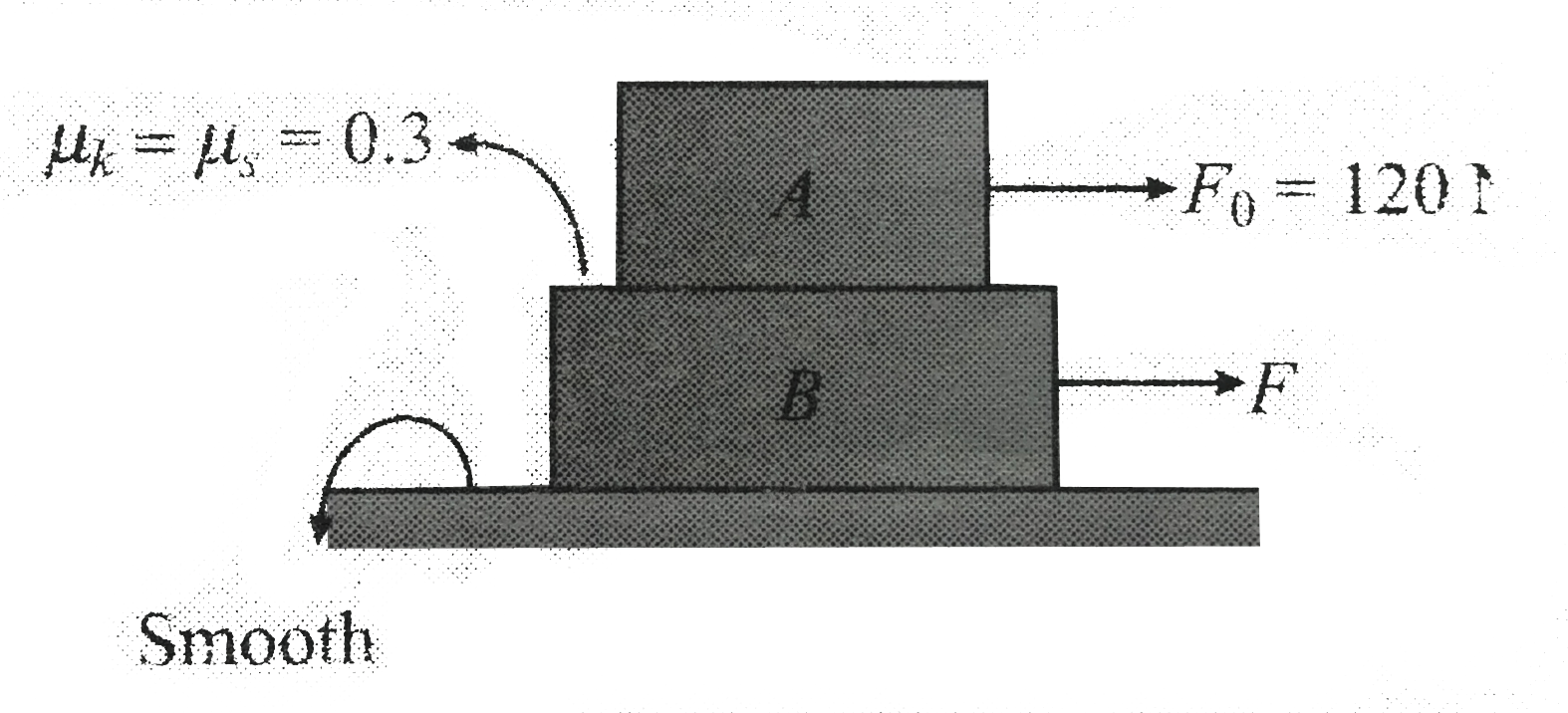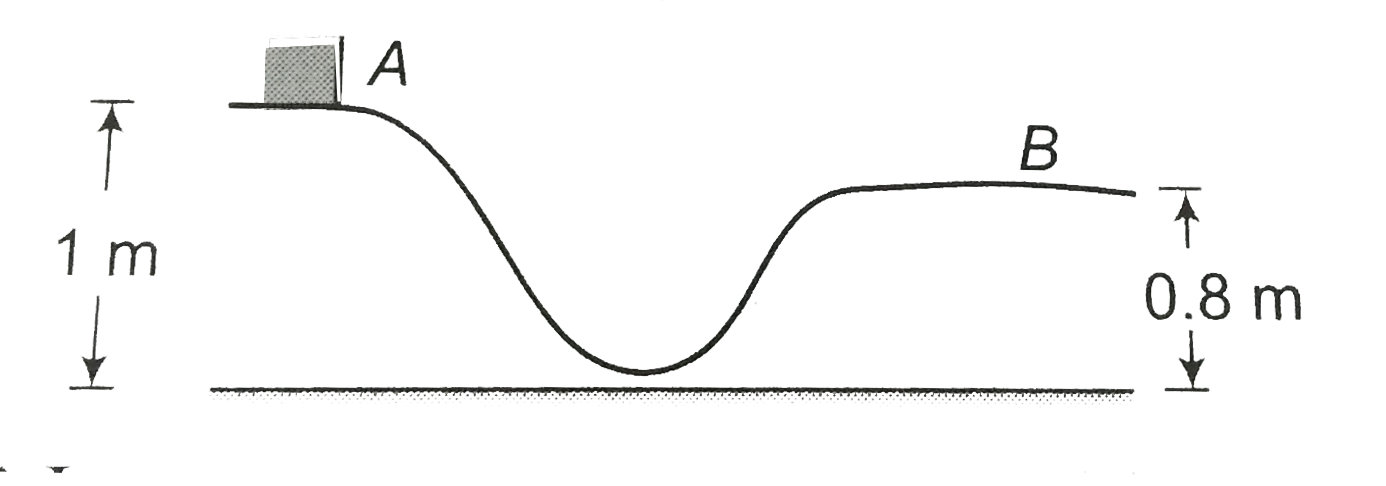In the following figure , an object of mass 1.2kg is at rest at point P. IF R and F are the reaction and the frictional force respectively then

R=6NF=6√3N
R=3N,F=3√3N
R=6NF=3N
R=6√3F=6N
The correct Answer is:D
Here, mass of an object m=1.2 kg
In equilibrium,
R=mgcos30∘
=1.2×10×√32=6√3N
and F=mgsin30∘=1.2×10×12=6N

Topper's Solved these Questions
- FORCE AND LAWS OF MOTIONBOOK - MTG IIT JEE FOUNDATIONCHAPTER - FORCE AND LAWS OF MOTIONEXERCISE - EXERCISE (INTEGER VALUE TYPE )
5 Videos
- FOOTSTEPS TOWARDS NEETBOOK - MTG IIT JEE FOUNDATIONCHAPTER - FOOTSTEPS TOWARDS NEETEXERCISE - Multiple Choice Question
45 Videos
- GRAVITATION BOOK - MTG IIT JEE FOUNDATIONCHAPTER - GRAVITATION EXERCISE - Olympiad/HOTS Corner
20 Videos
Similar Questions
In Figure an object of mass M=10kg is kept on a rough table as seen from above forces are appling on it as shown . Find the direction of static friction if the object does not move (Takeμ=0.4)

View SolutionTwo blocks A and B of mass 10kg and 20kg respectivelly, are arranged as shown in figure In the figure given a constant force F0=120Nact on block A and a force zero discoss the direction and nature of friction force and the acceleations of the block for different value of F

View Solution
Knowledge Check
In the following figure, the object of mass m is held at rest by a horizontal force as shown. The force exerted by the string on the block is -
 AFBmgCF+mgD√F2+m2g2
AFBmgCF+mgD√F2+m2g2Two blocks of masses 6 kg and 4 kg are connected b a rope of mass 2 kg are resting on a frictionless floor as shown in the following figure:

Ia a constant force of 60N is applied to 6 kg block then the tension in the rope at points A,B and C are respectively given by :A60N,60N,60NB30N,25N,20NC20N,25N,30ND20N,20N,20NP and Q are two objects with masses 5 kg and 30 kg respectively. Then
AP has more inertia than QBQ has move inertia than pCP and Q have the same inertiaDneighter P nor Q has any inertia
Velocity time graph of an object of mass 2kg is shown in figure. The force required to move the object for first four seconds is

View Solution
A block of mass 1 kg is placed at the point A of a rough track shown in the figure. If slightly pushed towards right, it stops at the point B of the track. The work done by the frictional force on the block during its transit from A to B is
View SolutionIn the figure shown, block of mass 2 kg is very long. Force of friction on 1 kg block is

View SolutionAn object of mass 3kg is at rest. Now a force of →F=6t2ˆI+4tˆj is applied on the object, the velocity of object at t=3s is.
View SolutionAn object of mass 2 kg at rest at origin starts moving under the action of a force
→F=(3t2ˆi+4tˆj)N The velocity of the object at t = 2 s will be -
View Solution
